Don’t Rock the Boat

Preparation and training are critical to boating safely with retrievers
By Bill Miller
The beauty of duck hunting is you can make it as social or solitary as you prefer. Timber hunts with five buddies hugging bark and three well-trained retrievers perched on tree stands — all eyes straining to see mallards above the canopy — make for mighty fine memories. But they are equaled by the memories of just me and the dog in the canoe paddling our way deep into public areas to spots no one else could … or wanted enough … to reach.
The common factors in both? Ducks, dogs, and boats.
A well-trained, well-behaved retriever is a pleasure to hunt with any time and any place. A would-be duck dog that’s out of control is seldom (in all honesty, never) fun to hunt with. Add a boat to the equation, and hunting with a dog like that can be deadly — not for the ducks, but for both the canine and human hunters. Tippy boats, cold water and colder air are dangerous enough. Adding an excited, out-of-control, 80-pound dog to the mix boosts the probability of disaster tenfold.
Ensuring the safety of a dog and humans in a boat happens in two places. One, of course, is out on the water. More important is in the socialization/training of the dog and preparation for seafaring hunts. Since it encompasses so many more days of a dog’s life than actual hunts, let’s look at socialization and training first.

Before the Maiden Voyage
The No. 1 rule for dog safety in a watercraft is to never take the dog on the water for its first time during a real hunt. This should go without saying, but you can’t imagine how many weekend warrior dog owners think that because the pup is reliably making water retrieves from shore, the dog is ready to work from a boat.
Think back to your first-ever boat ride, if you can remember it. Unless you were an infant, somebody explained to you what to expect. You probably rode in a parent’s lap. You probably had a life vest strapped on you. Chances are the conditions were carefully chosen to make a positive first impression. Maybe you were headed out to anchor up and fish; maybe you just went for a boat ride.
That experience is 180 degrees from picking a young dog out of the truck in the dark, amidst the frenzy of a public landing on opening morning, then struggling against his spraddled legs to put him into the floor of a strange, unstable vehicle he has never seen or smelled. And obviously, you didn’t sit down and describe to him what a boat was, where it travels, or what it’s for. You might as well have just set him down on the surface of the moon.
For the best outcome, just like almost everything in a retriever’s life, introductions to boats should be gradual and focused on fun rather than frantic and forced. Smart retriever training is about breaking every skillset down to its individual steps and teaching them one-at-a-time, then building the next small step on the previously learned behavior. This includes practicing retrieves from a boat in shallow water, or even dry ground, to learn the intricacies of unstable footing, locating the dog ramp, and how to load if there isn’t one. The weather and water should be hospitable, even inviting for a dip, in case something goes wrong. It will at some point, and you’ll both end up getting wet.
The more time spent in a boat, the more training retrieves made from it, and the more you enforce control while you’re in it, the more relaxed and comfortable you’ll both become. That is what you want: A boat ride in daylight or dark that becomes just another day at the office.

Safe Seafaring
Once your dog is calm and under control in the boat, the biggest obstacles are cleared, but there are still precautions to take in case something goes wrong.
The most important is for you and any other passengers to wear personal floatation devices when underway. Back in the day, we used to get away without them when jump shooting, for example, by saying, “Well, I can’t mount a shotgun with one of them on.” Not any more. There are vest styles that keep bulky floatation off your shoulders and inflatables worn like a belt or suspenders. They only inflate when you hit the water or pull a cord.
There are also a multitude of life vests for dogs, but that may be — pardon the pun — going overboard. However, neoprene vests are always a good idea. They provide added insulation to retain warmth, but also create buoyancy.
The training and socialization you did ahead of time should have included teaching the dog where its place is in the boat. In larger, big water duck boats, that might be a sheltered spot in the bow to curl up. In smaller boats and canoes, sitting or lying down between your feet is a good place while underway. Keeping the dog’s center of gravity as low as possible maximizes stability. Should you be jump shooting from the canoe, that position also keeps the dog behind the muzzle of the gun to conserve its hearing.
Another thing that should go without saying, but sadly must be said is, “Never tie your dog in the boat.” If the dog isn’t calm and steady enough to stay in its spot until released, the dog’s not ready to be in the boat yet. It doesn’t take much imagination to think of all the bad things that can happen with a dog securely tied to a seat or gunwale.
There have been times I’ve taken my own dogs to remote camps reached by a long-distance boat ride. Bringing the travel kennel is a convenience for me and adds to the dog’s comfort in a new environment. Depending on the size of the boat, the number of passengers, the amount of gear we’re taking and the conditions, I usually keep the dog out by me for the boat ride, but sometimes it’s better for everyone that the dog be in the kennel. However, when I do this, I don’t latch the kennel securely; I close the gate, but don’t engage the latches. That way if the worst happened, the dog could get out and swim for it.

Plan for Safety
If you plan to hunt from a boat with an inexperienced pup this fall, then now’s the time to break out your johnboat or canoe and get your retriever familiarized with it. Ensuring the safety of your dog and the waterfowlers in any boat depends mostly on what you do and how you plan long before you hit the water.

Shake it Off
There’s another skill you can teach your dog, mostly for your convenience and comfort in a boat: shaking off water when you tell it to. This is something many pro trainers teach their charges as a matter of rote. Imagine training a dozen dogs on water setups on a chilly day. Unless they understand the command to “shake” at a distance, you’re going to spend a lot of time wet. In a canoe or kayak, waiting to shake until commanded is also an important safety precaution. — Bill Miller

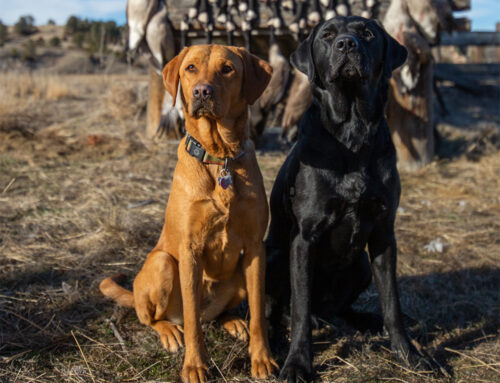
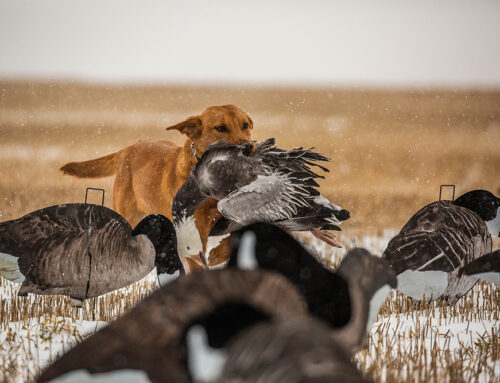
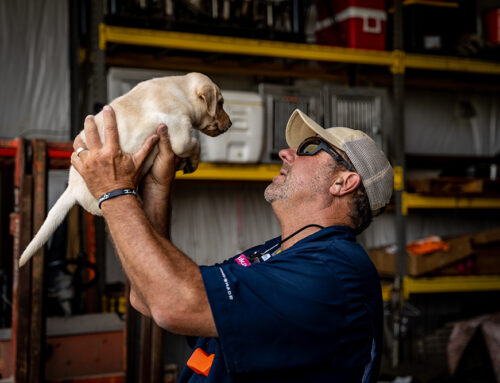
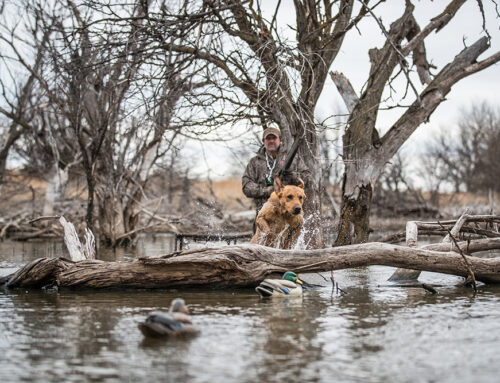
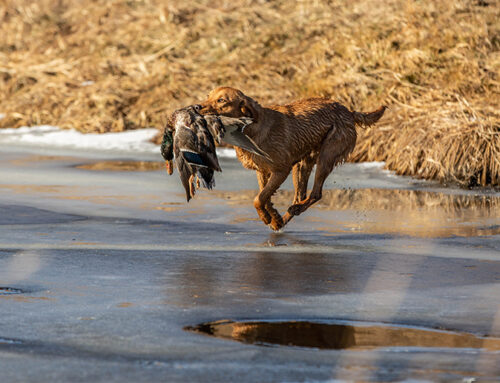
Leave A Comment